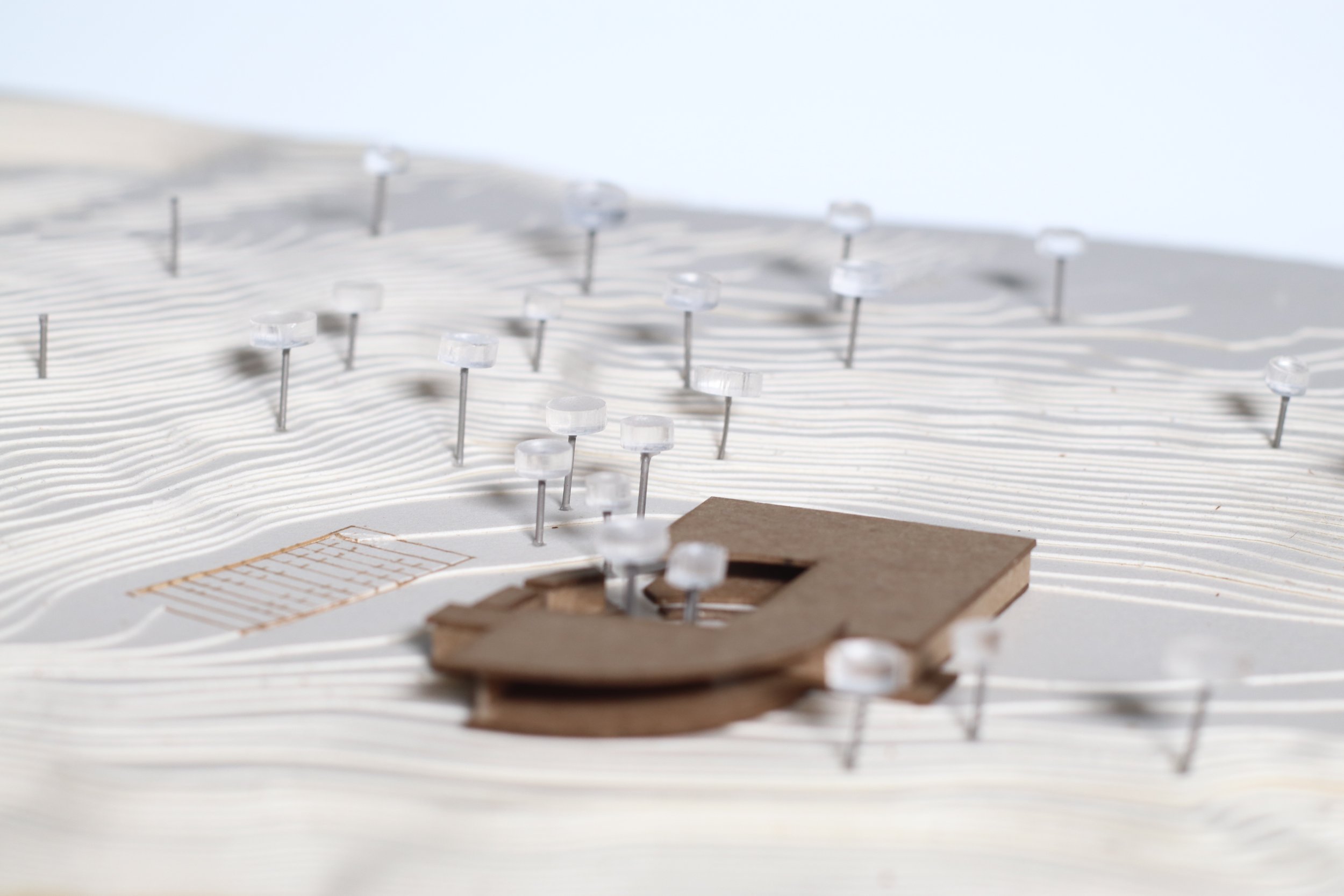LANDCYCLE
Winter 2024
Rhino + Illustrator
Neal Robinson
Exploring the site, Landcycle was inspired by its natural surroundings - the chickens, soil types, and trees that form a cohesive ecosystem. Landcycle attempts to integrate seamlessly into the existing environment, reflecting humanity's efforts to preserve and nurture nature. While humans may perceive this as caretaking, it can also be considered as disturbance by nature itself, causing a dynamic tension. This tension is shown in the form and operations of the project. For example, in the space you will witness a sod harvester extracting grass from the soil, disrupting natural habitats , but simultaneously employees producing fertilizer to nourish the ecosystem and sustain the resident chickens.
Sections
Elevations
Model
Similar to the cyclical process of land growth (from the (un)loading dock to the grass fields and back to the unloading dock), the building is structured into three interconnected zones that leak into each other similar to the care-taking process. The zones are employee zone, client zone, and public zones that aren't exactly secured by physical boundaries but by the activities performed and by whom they are performed. Most openings that connect spaces together are strategically positioned based on the interrelationship of these spaces together. For instance, the machine garage is open to the greenhouse, loading and unloading dock, and the fields, fostering a cohesive flow between spaces. The curved platforms serve as transitional spaces that connect all zones together forming a central courtyard accessible to all, where visitors are introduced to the mascot, the chickens. LandCycle creates an experiential journey that harmonizes human intervention with nature while acknowledging the inherent tensions and contradictions.
Before designing the building, a conceptual plan for the business operation was developed based on research.
Diagram 01
This diagram illustrates the quantity of eggs required to produce enough fertilizer to cover 1.4 acres of land. The process relies on collaboration among external farms, the on-site chickens, and the café. Together, these elements produce sufficient fertilizer to sustain the fields, enabling a sustainable land-cycling process.
Diagram 02
This diagram breaks down the components of the fertilizer produced by the business. Fertilizer is generated internally through composting, utilizing leaves and pine cones collected via a courtyard net, waste from the café, and contributions from the chickens.
Diagram 03
This diagram presents the café's recipe for its best-selling egg pies, a key product that ties into the overall cycle by linking food production to land sustainability.
















